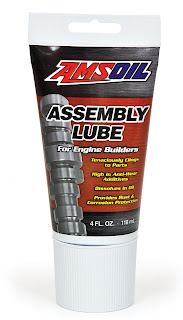GNCC Racing
Morgantown, W. Va. (December 23, 2011) – Just in time for the holidays, Racer Productions is pleased to announce the locations for the 2012 Can-Am Grand National Cross Country Series. America’s largest off-road racing series will once again kick off its 13-round schedule at Westgate River Ranch Resort in River Ranch, Fla., coinciding with Daytona Bike Week March 10-13.
GNCC Racing
Free Amsoil Catalog
Highlighting the 2012 calendar is the addition of three all-new GNCC Racing venues in Indiana, Kentucky and West Virginia-giving racers the opportunity to compete on fresh soil next season.
“We’re really excited to introduce three new venues to the GNCC Racing schedule next year,” said GNCC Trail Boss, Jeff Russell. “Since the Loretta’s GNCC, we’ve been traveling all over to find new GNCC Racing venues for our GNCC Racers and I think the fresh trail and new scenery will add a whole new level of excitement for everyone.”
The series returns to many GNCC favorites in 2012, including Snowshoe Resort, Unadilla MX, Ironman and Loretta Lynn’s, which will once again serve as the season finale.
A special weekend GNCC Racing format will take place at Loretta Lynn Ranch in November, in order to accommodate the 2012 ISDE and National Enduro schedules. Motorcycles will compete throughout the day on Saturday and ATV racing will follow on Sunday-atypical from the other 12 rounds of racing where ATVs compete on Saturday and motorcycles on Sunday.
What is GNCC?
Read the entire history of the event at www.gnccracing.com. Here are some excerpts;
How GNCC Racing Works
Six races are held each weekend. Each race contains several classes, with each class separated into separate starting-line rows that begin one minute apart. On ATV day, Youth riders aged 6 – 15 race for one hour starting at 8 a.m. A two-hour race for the Women, Utility, Super Senior and Novice classes starts at 10 a.m., and then the Pro, Pro Am, A and B riders race at 1 p.m. On Bike days, Youth riders aged 7 – 15 race for 90 minutes at 8 a.m.; Women, Super Senior and Novice riders race for two hours at 10 a.m.; and the Pro, A and B riders race for three hours starting at 1 p.m.
Each GNCC Racing class is scored separately using a computerized transponder scoring.
GNCC courses usually run between 10 and 12 miles long for adult classes and 3-5 miles for youth.
Over 1500 GNCC Racing riders will compete during a GNCC weekend, and they hail from all 50 states, as well as Europe, Asia and Australia.
The top pro racers make a lucrative living racing the series thanks to prize money and sponsorship endorsements. Racing is a full-time job for a GNCC championship contender.
About GNCC Racing
The AMA/ATVA-sanctioned Grand National Cross Country series is America’s premier off-road racing series. The 13-round race series stretches through the eastern US, starting with the season-opener in Florida in March and concluding with the season-finale in Indiana in October. The GNCC series is produced exclusively by Racer Productions, a Morgantown, West Virginia-based racing production company with over 30 years of experience in the industry. Cross-country racing is one of the most physically demanding sports in the world. The riders must navigate rugged terrain such as woods, mud, dirt, rocks and jumps for nearly three hours, while racing against the best talent in the world.
The GNCC Championship has drawn interest internationally, as riders from Europe, Africa, Australia and New Zealand compete regularly, usually backed by massive factory teams with an array of technicians at their disposal. Upwards of 1500 racers compete at each GNCC round on custom-built high-performance motorcycles and ATVs. The race action draws several thousand fans each weekend as well as a loyal following t
Through the series television show on the Versus Network here in the US, on the Fox Australia network in Australia, and on Motors TV in over 55 different European countries, as well as media coverage in off-road racing publications around the world. The growth of the series makes GNCC big business, but the core value of the series remains: easy-access, family-friendly, low-pressure racing.
Amsoil Sponsored Ironman GNCC Race
GNCC Schedule
| Round | Race Dates | Event | Location |
| Rd. 1 | March 10-13 | Westgate River Ranch | River Ranch, FL |
| Rd. 2 | March 17-18 | The General | Aonia Pass, GA |
| Rd. 3 | Mar 31-Apr 1 | Steele Creek | Morganton, NC |
| Rd. 4 | April 14-15 | Big Buck | Union, SC |
| Rd. 5 | April 28-29 | The Mammoth | Park City, KY |
| Rd. 6 | May 12-13 | Indy 100 | Springville, IN |
| Rd. 7 | May 26-27 | Buckwheat | Masontown, WV |
| Rd. 8 | June 23-24 | Snowshoe | Snowshoe, WV |
| Rd. 9 | July 7-8 | John Penton | Millfield, OH |
| Rd. 10 | Sep 15-16 | Unadilla | New Berlin, NY |
| Rd. 11 | Oct 6-7 | Powerline Park | St. Clairsville, OH |
| Rd. 12 | Oct 20-21 | Ironman | Crawfordsville, I |
| Rd. 13 | Nov 3-4 | Loretta Lynn’s | Hurricane Mills, |
GNCC Racing
GNCC Racing
Free Amsoil Catalog
WordPress Tags: Grand,National,Cross,Country,GNCC,Schedule,Morgantown,December,Racer,Series,America,Westgate,River,Ranch,Resort,Daytona,Bike,Week,March,calendar,addition,Indiana,Kentucky,West,Virginia,Trail,Boss,Jeff,Russell,Loretta,Racers,scenery,excitement,Snowshoe,Unadilla,Ironman,Lynn,finale,November,ISDE,Enduro,Motorcycles,ATVs,Read,history,event,Here,Works,classes,Youth,Women,Super,Senior,Novice,Over,Europe,Asia,Australia,money,sponsorship,championship,contender,About,ATVA,opener,Florida,October,production,industry,sports,world,terrain,woods,dirt,talent,Africa,Zealand,factory,disposal,Upwards,custom,performance,action,Through,television,Versus,Network,Motors,European,coverage,growth,Round,Race,Location,General,Aonia,Pass,Steele,Creek,Morganton,April,Buck,Union,Mammoth,Park,Indy,Springville,Buckwheat,Masontown,June,John,Penton,Millfield,Berlin,Powerline,Clairsville,Crawfordsville,Hurricane,Productions,locations,venues,excerpts,riders,endorsements,teams,publications,three,weekend,hour,hours,miles








